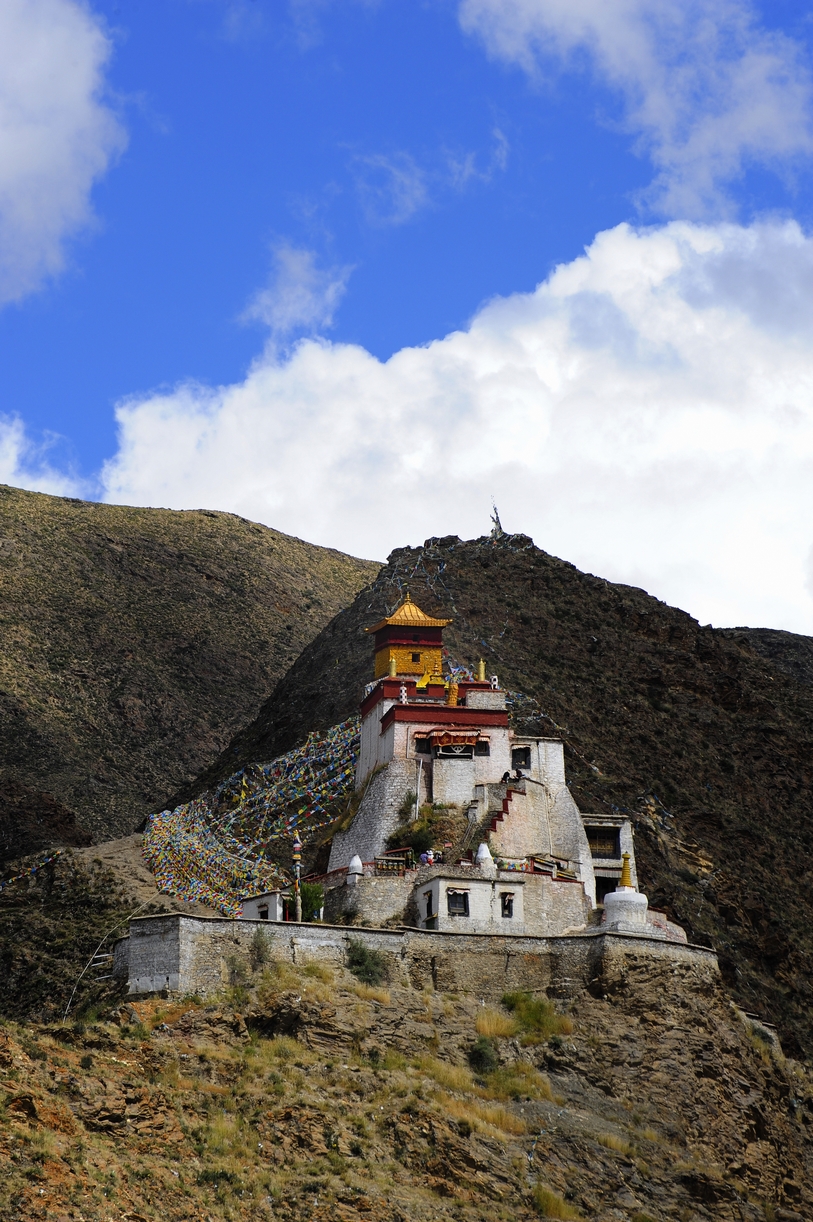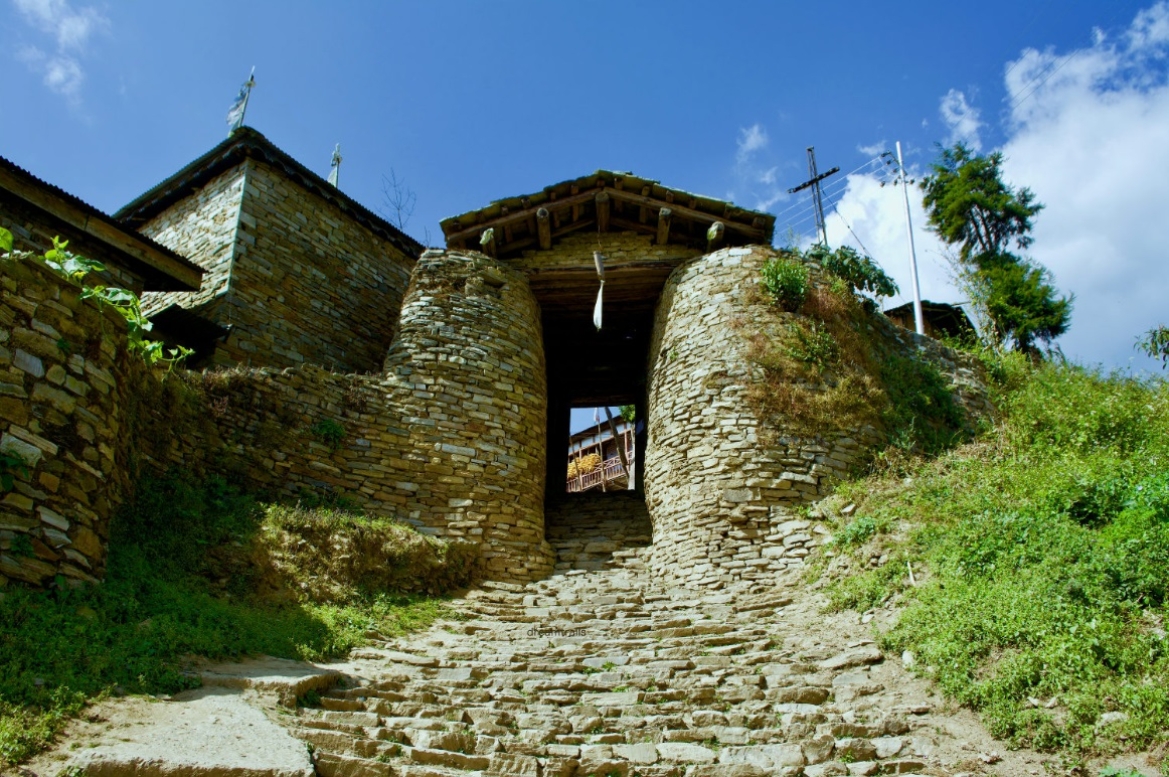|
Lhoba People
Lhoba (English translation: ; ; ) is any of a diverse amalgamation of Sino-Tibetan-speaking tribespeople living in and around Pemako, a region in southeastern Tibet including Mainling, Medog and Zayü counties of Nyingchi and Lhünzê County of Shannan, Tibet. In 1965 the Chinese government officially recognised Lhoba as one of the 56 ethnic groups in China. Lhobas are one of the smallest ethnic minority groups in China. Numbering 4,237 people, they make up about 0.1% of the population of the Tibet Autonomous Region. Etymology Lhoba is the Tibetan exonym for the inhabitants of the Lhoyü region. The name means "southerners". History The area nowadays inhabited by the modern Lhoba people was known in medieval texts as ''Lhoyü'' (or ''Luoyu'', ''lho-yul'', ལྷོ༌ཡུལ་). Lhoyü is now the name of an area in Tibet, while Lower Lhoyü is part of the Indian state of Arunachal Pradesh. Luoyu came under the control of Tibet from the 7th century onwards. It is ... [...More Info...] [...Related Items...] OR: [Wikipedia] [Google] [Baidu] |
Bokar Language
Bokar or Bokar-Ramo (; ) is a Tani languages, Tani language spoken by the Lhoba people, Lhoba in West Siang district, Arunachal Pradesh, India (Megu 1990) and Nanyi Township 南伊珞巴民族乡, Mainling County, Tibet Autonomous Region, China (Ouyang 1985). The Ramo dialect is spoken in Mechukha Subdivision and Monigong Circle (Badu 2004). Phonology Consonants * The pronunciation of /ɕ/ may vary between [ɕ] and [s] among different dialects. * Some speakers may also pronounce /tɕ/ as [ts] when preceding vowels other than /i/. * /h/ can be realized as either voiced [ɦ] or [h], when preceding /i/. *Stops /p t k/ are heard as unreleased [p̚ t̚ k̚] in word-coda position. * A retroflex affricate /tʂ/ can also occur only from Tibetan loanwords. Vowels * /ɯ/ can also be heard as more central [ɨ]. * /o/ is heard as more open and nasalized before /ŋ/ as [ɔ̃ŋ]. Writing system Bokar is written in the Latin script in India and the Tibetan script in China. Refere ... [...More Info...] [...Related Items...] OR: [Wikipedia] [Google] [Baidu] |
Shannan, Tibet
ShannanThe official spelling according to ( zh, c=山南, p=Shānnán, l=south of the mountains), also known as Lhoka (; zh, c=洛卡, p=Luò kǎ), is a prefecture-level city in the southeastern Tibet Autonomous Region, China. Shannan includes Gonggar County within its jurisdiction with Gongkar Chö Monastery, Gonggar Dzong, and Lhasa Gonggar Airport, Gonggar Airport all located near Gonggar town. Located on the middle and lower reaches of the Yarlung Valley, formed by the Yarlung Tsangpo, Yarlung Tsangpo River, Lhoka region is often regarded as the birthplace of Tibetan civilization. It is bounded by the city of Lhasa to the north, Nyingchi to the east, Shigatse on the west and the international border with India and Bhutan on the south. The city measures east to west and from north to south. Its uniqueness stems from the fact that Tibet's earliest agricultural farmland, its first palace and first vihara, Buddhist monastery are all located in Lhoka. It also has the distinctio ... [...More Info...] [...Related Items...] OR: [Wikipedia] [Google] [Baidu] |
Bangni-Tagin Language
Tagin (Tagen), also known as West Dafla and Bangni (incl. Na) is a Sino-Tibetan language Sino-Tibetan (also referred to as Trans-Himalayan) is a family of more than 400 languages, second only to Indo-European in number of native speakers. Around 1.4 billion people speak a Sino-Tibetan language. The vast majority of these are the 1.3 ... spoken in India. Paper presented at the 13th Himalayan Languages Symposium. Canberra, Australian National University, 9 August 2013. Stuart Blackburn states that the 350 speakers of Mra have "always been, wrongly, subsumed under the administrative label of Tagin." It is not clear whether Mra is therefore a distinct dialect of Bangni-Tagin, or a different Tani language altogether. References Languages of Assam Tani languages Languages of Arunachal Pradesh Endangered languages of India Endangered Sino-Tibetan languages Vulnerable languages {{st-lang-stub ... [...More Info...] [...Related Items...] OR: [Wikipedia] [Google] [Baidu] |
Tagin People
The Tagins are one of the major tribes of Arunachal Pradesh, India, a member of the larger designation of Tani Tribes. The Tagins refers to a tribe of Northeast India Region. The Tagins are members of the larger designation of Abotani (''abo'' - 'father', ''tani'' - 'ancestor's name'). Most Tagin are adherents of Donyi-Polo, with a Christian minority. Distribution Tagins are the dominant tribe in Upper Subansiri district. They are also found dispersed in the adjoining districts, especially in West Siang, Papum Pare, in Arunachal Pradesh, as well as some areas of Tibet adjacent to Arunachal Pradesh. Population According to 2011 census there are 62,931 Tagin people in India. A few thousand in Tibet is expected. There are many clans among the Tagins, for example, Duchok, Mosing-Mosu, Tamin (Nakam, Nayam, Neva, Negia Nutik, Mindi (Nasi & Nalo) and Japo), Leyu, Reri, Natam-Gyadu (Bagang), Nah, Gyama, Tache-Tagia, Tasi, Dui, Topo, Tani-Tator, Cherom-Chera, Buning, Heche, Kodak-Kon ... [...More Info...] [...Related Items...] OR: [Wikipedia] [Google] [Baidu] |
India
India, officially the Republic of India, is a country in South Asia. It is the List of countries and dependencies by area, seventh-largest country by area; the List of countries by population (United Nations), most populous country since 2023; and, since its independence in 1947, the world's most populous democracy. Bounded by the Indian Ocean on the south, the Arabian Sea on the southwest, and the Bay of Bengal on the southeast, it shares land borders with Pakistan to the west; China, Nepal, and Bhutan to the north; and Bangladesh and Myanmar to the east. In the Indian Ocean, India is near Sri Lanka and the Maldives; its Andaman and Nicobar Islands share a maritime border with Thailand, Myanmar, and Indonesia. Modern humans arrived on the Indian subcontinent from Africa no later than 55,000 years ago., "Y-Chromosome and Mt-DNA data support the colonization of South Asia by modern humans originating in Africa. ... Coalescence dates for most non-European populations averag ... [...More Info...] [...Related Items...] OR: [Wikipedia] [Google] [Baidu] |
Abo Tani
Abotani or Abu Tani is considered the progenitor of the Tani tribes of the state of Arunachal Pradesh in India. Abotani are located in Tibet and Arunachal Pradesh. In China, Abotani tribes recognized as part of Lhoba ethnic group. The Apatani, Mising, Adi, Galos, Tagin and Nyishi are the Subtribes of Abotanis. They follow the Donyi-Polo religion and credit Abotani with the technique of rice cultivation. Etymology The ''Abo'' or ''Abu'' means "father" and Tani means "human". Oral history The following story is told by priests (miri) among the Adi people: Other Tani legends reference Abotani: a woman in the Digo Ane region told him how to cultivate rice; Abotani was successful at rice cultivation thanks to his wise wife, Aio Diiliang Diibiu; however, he divorced her to marry another woman. The new wife's pursuit of leisure brought disgrace to his wealth; when Abotani realized this, he left the second wife and continued the cultivation on his own. Once he needed his sist ... [...More Info...] [...Related Items...] OR: [Wikipedia] [Google] [Baidu] |
Mishmi People
The Mishmi people are an ethnic group of Tibet and Arunachal Pradesh, India. The area is known as the Mishmi Hills. Only one group, called the Deng, occupy Zayu County in southern Tibet. Clans The Mishmi consist of four tribes: Idu Mishmi (''Idu Lhoba''); Digaro tribe (''Taraon, Darang Deng''), Miju Mishmi (''Kaman Deng''), and the Deng Mishmi. The four sub-divisions of the tribe emerged due to the geographical distribution, but racially all the four groups are of the same stock. The Idu are also known as Yidu Lhoba in Tibet and often referred as Chulikatas in Assam. The Idus are primarily concentrated in the Upper Dibang Valley and Lower Dibang Valley district and parts of the northern part of Lohit district of Arunachal Pradesh in India. Taraon, also called Digaru Mishmis, are distributed in the hill and the foothills between the Dibang, Digaru and the Lohit rivers. Kamans are also known as the Miju Mishmis; they live between the Lohit and the Kambang rivers in the fo ... [...More Info...] [...Related Items...] OR: [Wikipedia] [Google] [Baidu] |
Exonym And Endonym
An endonym (also known as autonym ) is a common, name for a group of people, individual person, geographical place, language, or dialect, meaning that it is used inside a particular group or linguistic community to identify or designate themselves, their place of origin, or their language. An exonym (also known as xenonym ) is an established, ''non-native'' name for a group of people, individual person, geographical place, language, or dialect, meaning that it is used primarily outside the particular place inhabited by the group or linguistic community. Exonyms exist not only for historico-geographical reasons but also in consideration of difficulties when pronouncing foreign words, or from non-systematic attempts at transcribing into a different writing system. For instance, is the endonym for the country that is also known by the exonyms ''Germany'' and in English and Italian, respectively, and in Spanish and French, respectively, in Polish, and and in Finni ... [...More Info...] [...Related Items...] OR: [Wikipedia] [Google] [Baidu] |
Tani People
The Tani people include the Adi, Apatani, Galo, Mising, Nyishi, and Tagin ethnic groups of India and China. As members of the Tibeto-Burman ethnic group, they speak various Tani languages and primarily reside in the Indian states of Arunachal Pradesh and Assam, as well as the Tibet Autonomous Region in China. With a population of approximately 2.17 million, the Tani people are among the largest ethnic groups in Northeast India. The Chinese government categorises the Tani people under the Lhoba people, Lhoba ethnic group. History Most of the residents of Arunachal Pradesh and Upper Assam belong to the six Tani tribes ( Nyishi, Adi people, Adi, Galo tribe, Galo, Apatani, Tagin, and Mising) who are all said to be descended from Abotani. Some of the history of the Tani people has been recorded in the ancient libraries of Tibet as the Tani people traded swords and other metals with Tibetan people, Tibetans in exchange for meat and wool. Festivals Solung Solung, obs ... [...More Info...] [...Related Items...] OR: [Wikipedia] [Google] [Baidu] |
Arunachal Pradesh
Arunachal Pradesh (; ) is a States and union territories of India, state in northeast India. It was formed from the North-East Frontier Agency (NEFA) region, and India declared it as a state on 20 February 1987. Itanagar is its capital and largest town. It borders the Indian states of Assam and Nagaland to the south. It shares Borders of India, international borders with Bhutan in the west, Myanmar in the east, and a disputed 1,129 km border with China's Tibet Autonomous Region in the north at the McMahon Line. Arunachal Pradesh is claimed in its entirety by China as South Tibet as part of the Tibet Autonomous Region; China Sino-Indian War, occupied some regions of Arunachal Pradesh in 1962 but later withdrew its forces. As of the 2011 Census of India, Arunachal Pradesh has a population of 1,383,727 and an area of . With only 17 inhabitants per square kilometre, it is the least densely populated state of India. It is an ethnically diverse state, with predominantly Monpa p ... [...More Info...] [...Related Items...] OR: [Wikipedia] [Google] [Baidu] |
Exonym
An endonym (also known as autonym ) is a common, name for a group of people, individual person, geographical place, language, or dialect, meaning that it is used inside a particular group or linguistic community to identify or designate themselves, their place of origin, or their language. An exonym (also known as xenonym ) is an established, ''non-native'' name for a group of people, individual person, geographical place, language, or dialect, meaning that it is used primarily outside the particular place inhabited by the group or linguistic community. Exonyms exist not only for historico-geographical reasons but also in consideration of difficulties when pronouncing foreign words, or from non-systematic attempts at transcribing into a different writing system. For instance, is the endonym for the country that is also known by the exonyms ''Germany'' and in English and Italian, respectively, and in Spanish and French, respectively, in Polish, and and in Finni ... [...More Info...] [...Related Items...] OR: [Wikipedia] [Google] [Baidu] |




